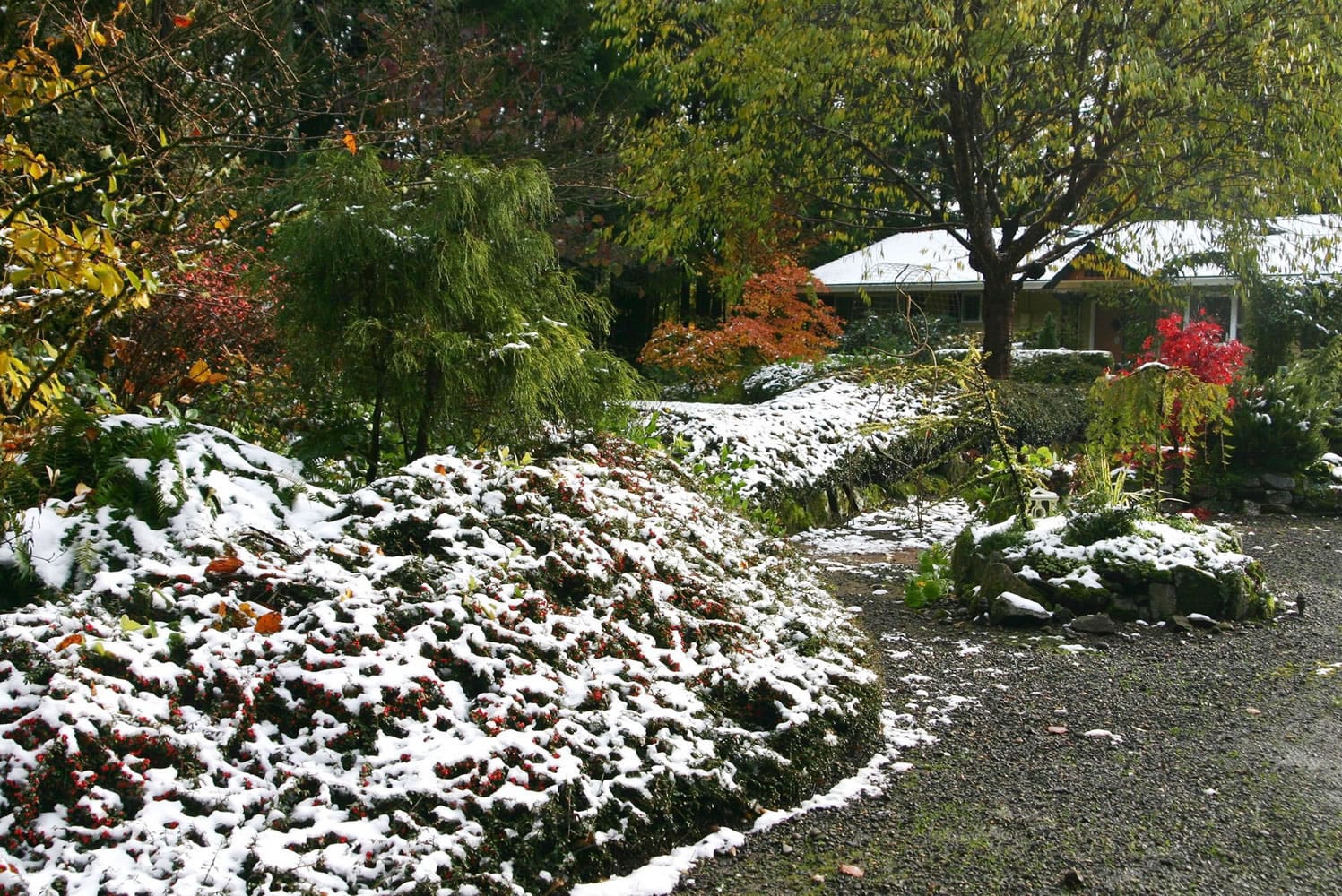Winter is as changeable as any other season in the Northwest. It is the coldest season of the year, extending from the end of autumn to the beginning of spring or, as reckoned astronomically, from the December solstice to the March equinox. Ideally, it stays cold enough to put our perennial plants and fruit trees into a state of winter dormancy.
In the dictionary, winter is further described as being a time marked by lack of life, warmth and cheer. There is no doubt it can be dreary out of doors when sunlight fades by 4:30 in the afternoon, but for those of us who garden in the Northwest, the very dreariness of the weather is a signal to get out and perform certain garden chores. A few layers of clothing will make sure we don’t get over-chilled.
When the last leaf falls from the contorted filbert, I see it as a signal to prune this and other gangly deciduous shrubs back into shape. Planted just outside the large sliding door to the barn, the intricate design of this shrub stands out as a distinct element of the winter landscape. Where it might not be noticed amid the splendor of summer flowering plants, it becomes a focal point in midwinter.
In my garden, I set a precedent for allowing most plants, especially trees and shrubs, to follow their natural growth patterns rather than trying to control them by pruning. It would be overwhelming to have to prune every plant in the garden. This is one of the few shrubs that I prefer tightly pruned. I do so because cutting it back makes it appear even more contorted. Once pruned, the focus is on the plant’s fascinating growth pattern through the winter.
The common name for this shrub, Harry Lauder’s Walking Stick, is a perfect description of the branch structure. In it I see an old man as crooked as the cane he carries. I trim it yearly, taking off any canes that have grown too long or any branches with a semblance of straightness to them. My goal is to keep the mass of twisting, turning branches within a general rounded framework. In a way it is controlled chaos.
It’s important to mulch
At this time of year, as the garden takes a definitive step into winter dormancy, the best work we can do is to assist the natural processes of the season. By now, the foliage of deciduous trees and shrubs have fallen to the ground. This is nature’s way of mulching the garden. Some gardeners will take advantage of nature’s work and let the mulch remain through winter. Take care that the mulch does not pile up against the trunk of woody plants or smother the crown of garden perennials.
This winter mulching is the most important of the year. Leaves falling from trees are one of the first signals that the soil itself will soon take on the chill of the season. By waiting until the ground chills, then mulching with the purpose of maintaining the chilled soil temperature, you are helping to ensure that the plants in the garden stay in a state of dormancy throughout winter.
We are encouraged to mulch for purposes other than plant protection. Two of the best reasons to add a winter mulch are to enrich the soil and inhibit weeds. Adding an organic mulch to beds and borders will be the one most important chore you can do to improve the overall soil condition of a garden. Good soil is the key element of plant success.
For those gardeners with a penchant for tidy beds and borders, rake up and remove any plant or garden debris, but replace nature’s mulch with a layer of bark, compost or other winter mulch. The neat gardener is the most likely to put down a winter mulch because it gives the garden a well-maintained, finished look. Mulching can also be done to give the space between plants a uniform color and texture. Bark dust is often used for this purpose.
If you have outdoor planters available, insert cuttings of holly, heavenly bamboo, cedar and the stems of berry-covered cotoneaster into a light planting mix. Arrange them for a long winter color display. This is a great time of year to clean out, repair or throw away. On the coldest days of winter, give yourself a break and spend some time inside looking out. Like us, our garden has earned this well-deserved rest.
Robb Rosser is a WSU-certified master gardener. Reach him at Write2Robb@aol.com.



